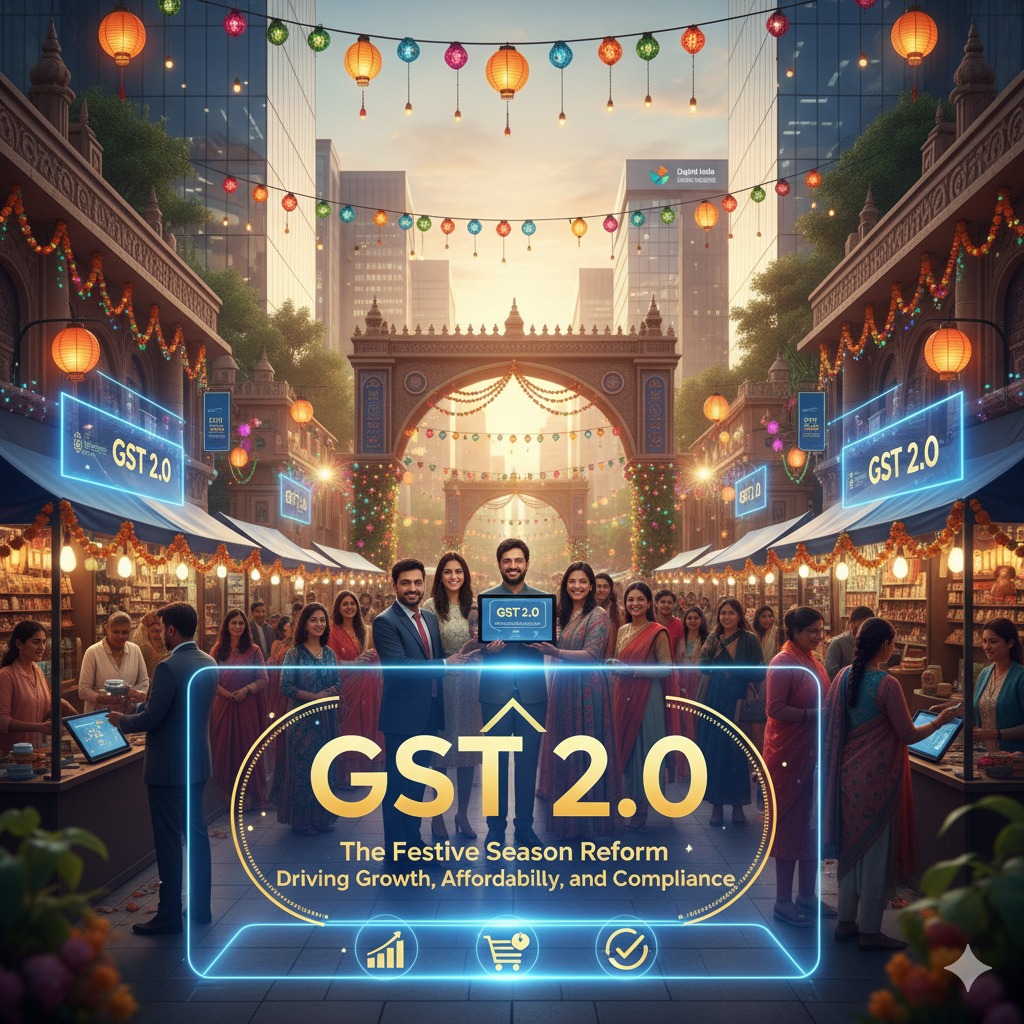GST 2.0: India’s “Diwali Gift” for Businesses and Consumers
Prime Minister Narendra Modi’s Independence Day 2025 announcement of a major GST overhaul is now set to roll out as a “Diwali Bonanza” in September–October 2025. Unlike earlier incremental changes, the GST 2.0 reform is positioned as a landmark move—simplifying tax compliance, stimulating demand, and enhancing consumer purchasing power.
???? The New Simplified GST Framework
From Complexity to Clarity
Two Primary Slabs: The existing five-tier structure (0%, 5%, 12%, 18%, 28%) will be consolidated into just two rates – 5% and 18%.
Rate Rationalisation:
99% of items under the 12% bracket will move down to 5%.
90% of goods in the 28% bracket will shift to 18%.
Compensation Cess Recast: Current cess to be phased out, replaced with a 40% levy on specific “sin goods.”
???? Key Beneficiaries
The reform is designed to provide direct relief to consumers and boost demand in high-volume industries:
Everyday Essentials – Ghee, packaged foods, and footwear (< ?1,000) will now attract just 5% GST, easing household budgets.
Electronics – Refrigerators, ACs, and TVs shift from 28% to 18%, encouraging consumption.
Automobiles – Small cars and two-wheelers move to 18%, a targeted step to revive auto sector growth (FY25 passenger vehicle sales grew only 2%).
Insurance – Health and life insurance premiums may be taxed at 5% or exempted, strengthening financial inclusion.
? Will Consumers See Lower Prices?
The success of GST 2.0 depends on whether businesses transfer tax savings into reduced MRPs.
Why benefits should flow through:
Substantial rate cuts (12% → 5% and 28% → 18%).
Intense competition in auto and electronics sectors.
Reform tied to a ?1.98 lakh crore boost in consumption and an estimated 0.45% GDP uplift.
Stronger compliance checks via the Invoice Management System (IMS) and E-Way Bill 2.0.
?? However, in some industries, reductions may partly offset rising raw material or logistics costs. Strict enforcement of anti-profiteering rules will therefore be key.
???? Economic & Compliance Impact
GDP Growth: Reform expected to add 0.35–0.45% to GDP by FY27.
Revenue Trade-Off: A short-term dip of 0.2–0.4% of GDP anticipated, but offset by stronger compliance and consumption.
Consumption Push: With 61% of GDP (FY25) driven by household spending, GST 2.0 offers a direct consumption boost.
???? Compliance Enhancements
For businesses, GST 2.0 brings in simplified, tech-driven compliance measures:
Auto-Populated Returns – GSTR-3B to be system-generated and non-editable, reducing errors.
Invoice Management System (IMS) – Easier ITC reconciliation, minimising disputes.
E-Way Bill 2.0 – Real-time goods tracking to curb tax evasion.
For MSMEs and mid-sized businesses, these changes provide a stronger compliance framework with reduced complexities.
???? India’s Step Towards a Consumption-Led Economy
GST 2.0 is more than a structural reform; it is a strategic reset to:
Enhance consumer affordability.
Support revival of automobiles, electronics, and insurance.
Increase compliance efficiency through digitisation.
If executed with effective anti-profiteering enforcement, GST 2.0 could indeed be the “Diwali Gift” that positions India as a consumption-driven global economic leader.


Comments
No Comments yet